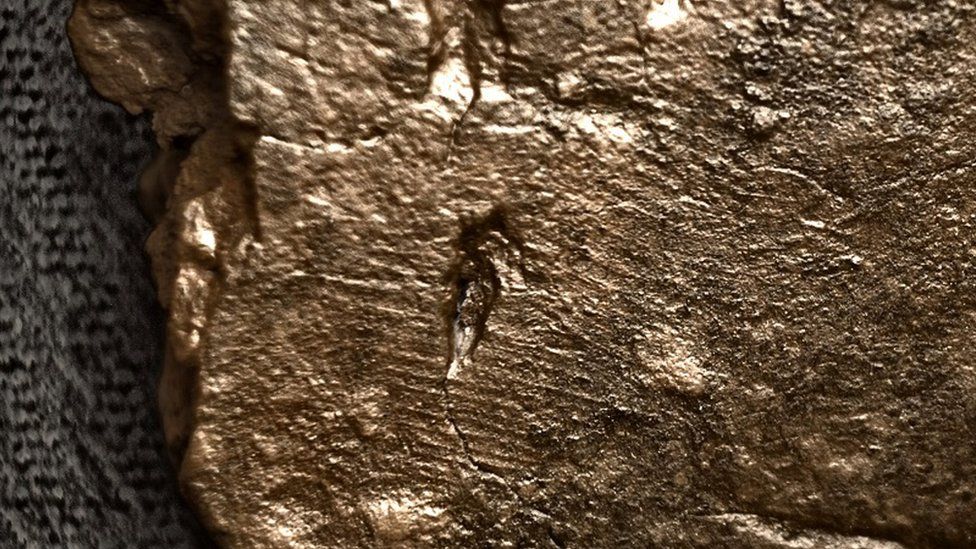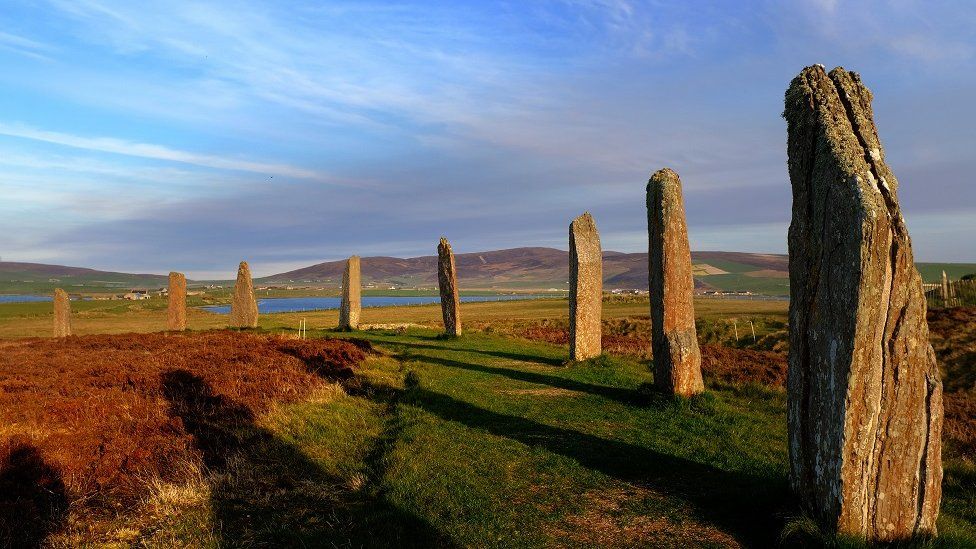Fingerprints point to 5,000-year-old Orkney pottery class
Archaeologists believe fingerprints on fragments of clay found in Orkney were left by experienced potters and their young apprentice 5,000 years ago.
Experts have newly identified a print left by a 13-year-old boy.
Previously finger marks left by a young male, possibly the same boy, and two adult men were discovered on fragments of pottery at Orkney's Ness of Brodgar.
Archaeologists suggest the prints were left as experienced potters showed novices how to shape a piece of clay.
They have been excavating at the complex of ancient buildings at the site in the Heart of Neolithic Orkney World Heritage Site since 2003.
Only a small number of fingerprints have been discovered so far.
University of the Highlands and Islands Archaeology Institute, which leads the excavations, said the latest fingerprints were found by ceramics specialists Roy Towers and Jan Blatchford while they examined the site's huge collection of sherds - fragments - of pottery.
The institute said it was possible to work out the age and sex of a person from a fingerprint.
It said the distance between ridges, for example, increased as an individual grew, while male ridges were usually broader.
The latest prints were examined by Prof Kent Fowler, director of the University of Manitoba's ceramic technology laboratory in Winnipeg, Canada.
By measuring the density and breadth of the fingerprint ridges, and accounting for the shrinkage of the clay during drying and firing, he could determine two adult men aged about 19 along with one, or possibly two boys aged 13 and 14, had left finger marks on the Ness of Brodgar pottery.
Prof Fowler said: "The presence of younger and older prints on all the Orkney sherds so far is interesting and might relate to teaching and learning the craft."
Nick Card, the director of the excavations, said: "This is yet another exciting discovery at the Ness, and although it is early days we could be seeing the emergence of a pattern developing for the production of pottery in the Neolithic, which would have implications for the division of labour and tasks."









No comments:
Post a Comment